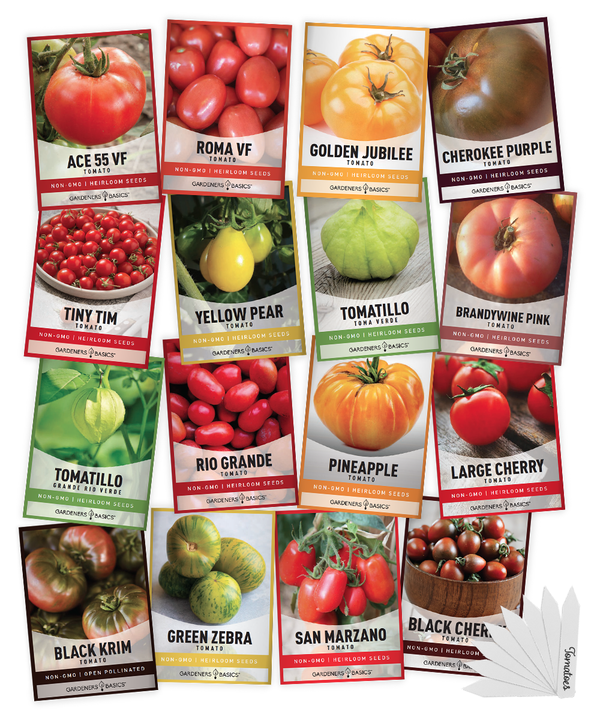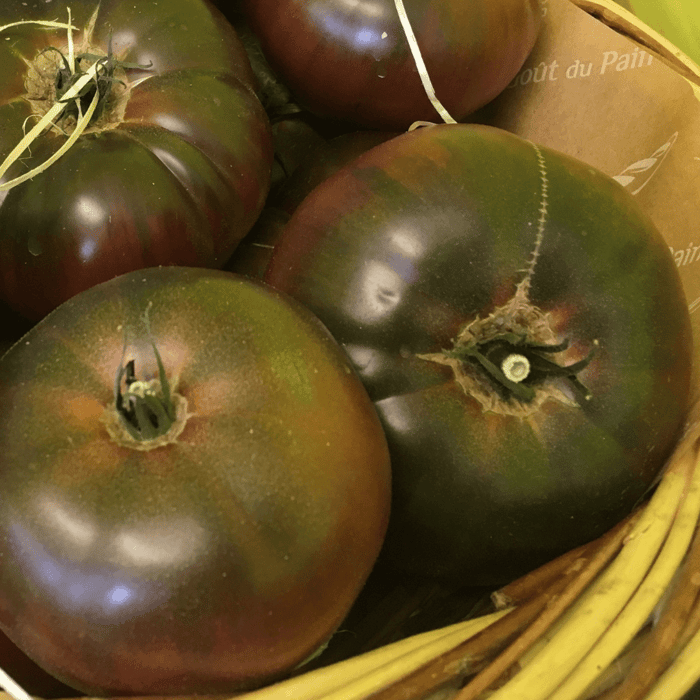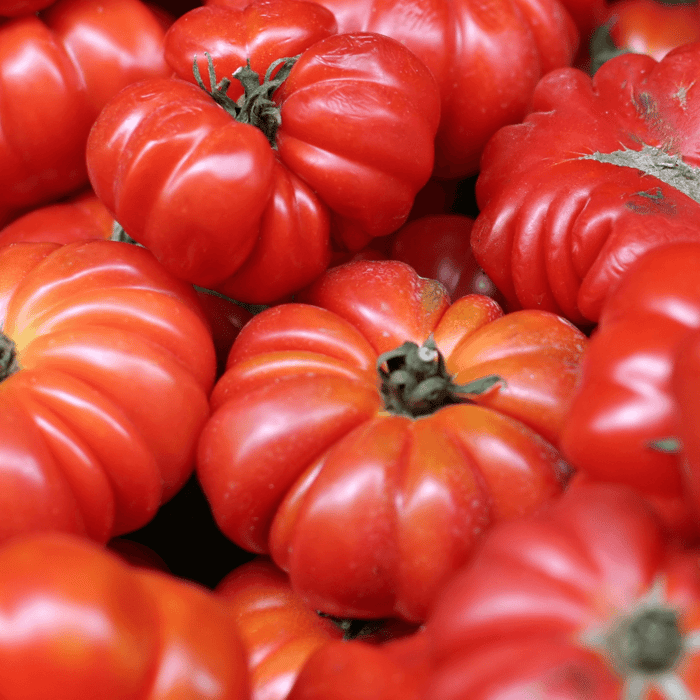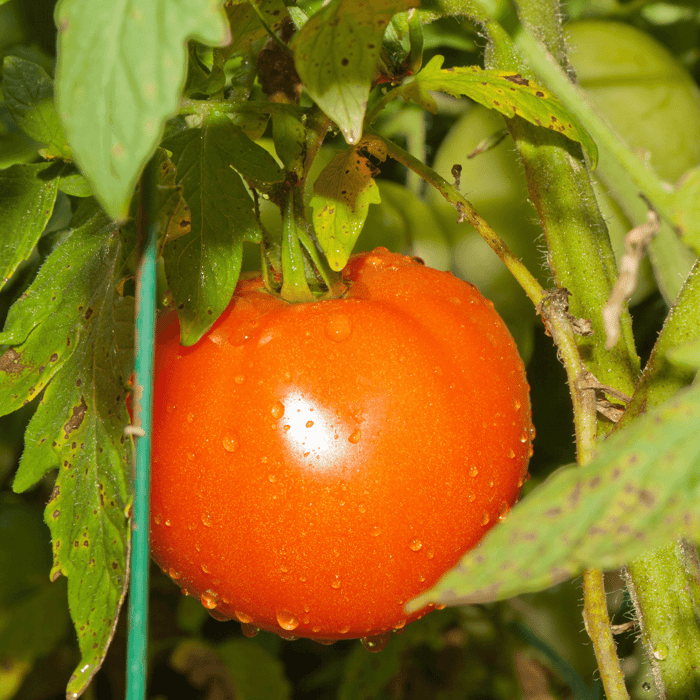Growing Black Krim tomatoes can be a rewarding and delicious experience. These unique heirloom tomatoes, weep purple, almost black color, and rich, smoky flavor, are a favorite among gardeners and enthusiasts. In this step-by-step guide, I'll walk you through everything you need to know to learn how to grow Black Krim tomatoes and harvest them in your garden.
Introduction
Hello fellow gardeners! My name is Jeena, and I am a passionate gardener who loves experimenting with different varieties of tomatoes and tomato seeds. One of my all-time favorites is the Black Krim tomato seeds. Originating from the Black Sea region, specifically the Isle of Krim on the Crimean Peninsula (also known as Black Crimea), this unique beefsteak tomato has a distinctive appearance and taste that sets it apart from other varieties. So let's dive into the world of growing Black Krim tomatoes together!
1. Characteristics of Black Krim Tomatoes
Before we start planting, let's learn about some of the critical characteristics of Black Krim tomatoes:
- Native: Isle of Krim, Crimean Peninsula
- Family: Solanaceae (nightshade)
- History of the Seed: An heirloom tomato seed variety brought to the United States in the early 1990s
- Days till maturity: 70-90 days
- Planting depth: 1/4 to 1/2 inch
- Plant spacing: 24-36 inches apart
- Days to germination: 6-14 days
- Start indoors or direct sown: Best to start seeds indoors
- Full sun or partial shade: Full sun exposure
- When to harvest: When the fruit is dark purple and slightly soft to the touch
- How tall does the plant get: 4-6 feet tall
- How wide does the plant get: 3-4 feet wide
Black Krim Tomato Seeds

$2.49
Black Krim Tomato Seeds - Heirloom, Non-GMO, Non-Hybrid, Open-Pollinated Discover the rich, robust flavor of Black Krim Tomato Seeds, a classic heirloom variety renowned for its deep, mahogany-colored fruits with striking green shoulders. Perfect for garden enthusiasts and chefs alike,… read more
2. Starting Black Krim Tomato Seeds Indoors
Starting your Black Krim tomato seeds indoors is the best way to get a head start on the growing season. Here's how to do it:
-
Select the suitable container: Choose a clean, 3-4 inches-deep container with drainage holes. You can use individual pots or seed starting trays.
-
Prepare the soil: Fill the container with a well-draining seed starting mix, leaving about 1/2 inch of space from the top.
-
Plant the seeds: Place the tomato seed about 1/4 to 1/2 inch deep into the soil and gently cover with the seed starting mix.
-
Water: Moisten the soil with a spray bottle to avoid displacing the seeds.
-
Provide warmth: Place the container in a warm area, between 70-80°F. A heat mat can help maintain a consistent temperature.
-
Monitor germination: Seeds should germinate within 6-14 days. Keep the soil consistently moist but not soggy.
3. Transplanting Black Krim Tomato Seedlings
Once your tomato seedlings have grown to about 3-4 inches tall and developed their second set of true leaves, they can be transplanted. Follow these steps:
-
Harden off seedlings: Gradually expose your seedlings to outdoor conditions over oover7-10 days. This will help them acclimate to their new environment.
-
Prepare the garden bed: Choose a spot with fun exposure and well-draining soil. Add compost and other amendments as needed. If using raised beds, space them 24-36 inches apart.
-
Transplant seedlings: Dig deep enough to accommodate the seedling's root ball. Plant the seedling so that the base of the stem is slightly buried, which encourages a robust root system.
- Water: Water the transplanted seedlings thoroughly to help them establish themselves in their new environment.
4. Caring for Black Krim Tomato Plants
To ensure a successful harvest, provide your Black Krim tomato plants with the proper care and attention. is important
-
Watering: Tomatoes require consistent moisture. Water deeply and regularly, aiming for 1-2 inches per week. Water at the base of the plant to avoid wetting the leaves, which can lead to disease.
-
Fertilizing: Apply a balanced fertilizer when transplanting and again when the first fruits bloom. Avoid over-fertilizing, which can cause excessive foliage growth at the expense of fruit production.
-
Staking and support: Since Black Krim tomato plants can grow up to 6 feet tall, providing support is essential Use tomato cages or stakes to prevent the plants from toppling over under the weight of the fruit.
-
Pruning: Prune lower leaves and suckers to increase air circulation and reduce disease risk. This also helps direct the plant's energy toward fruit production.
-
Monitor for pests and diseases: Black Krim tomatoes are susceptible to common tomato pests and diseases like aphids, tomato hornworms, and blossom end rot. Regularly inspect your plants and address any issues promptly. Blossom end rot is best is you use preventative methods and it can take some time to address the issues.
Heirloom Tomato Seeds for Planting | 16 Variety Pack

$19.95
The Ultimate Tomato Seed Variety Set - 16 Heirloom, Non-GMO Tomato Varieties for Your Home Garden Introducing our 16 Tomato Seeds Variety Pack, a must-have collection for any gardening enthusiast or professional grower! This premium seed assortment includes a diverse selection… read more
5. Preventing Blossom End Rot in Black Krim Tomatoes
Blossom end rot is a common issue that can affect Black Krim tomatoes. It's caused by a calcium deficiency, often exacerbated by inconsistent watering. To prevent blossom end rot:
- Maintain consistent moisture levels in the soil.
- Apply calcium-rich amendments, like lime or gypsum, to the soil before planting.
- Use a calcium-rich foliar spray if symptoms appear.
6. Addressing Cracking in Black Krim Tomatoes
Black Krim tomatoes are prone to cracking, especially when they receive uneven water or rapid growth spurts. To minimize cracking:
- Provide consistent moisture by watering regularly.
- Mulch the soil to maintain even moisture levels and regulate soil temperature.
- Avoid over-fertilizing, which can lead to rapid growth.
7. Harvesting Black Krim Tomatoes
To harvest your Black Krim tomatoes:
- Monitor for ripeness: Look for a deep purple color and a slightly soft texture when gently squeezed.
- Use a clean, sharp pair of scissors or pruners to cut the fruit from the vine, leaving a small portion of the stem attached.
8. Enjoying Your Black Krim Tomato Harvest
Now that you've successfully grown and harvested your Black Krim tomatoes, it's time to enjoy them! These delicious tomatoes can be used in various dishes, such as salads, sandwiches, and sauces. Their unique flavor adds depth and complexity to any dish, making them a standout ingredient in your homegrown tomato repertoire.
In conclusion, growing Black Krim tomatoes can be a fun and rewarding experience for gardeners of all skill levels. By following this step-by-step guide, you'll be well on your way to enjoying a bountiful harvest of these unique and flavorful heirloom seed tomatoes. Happy gardening!
 Frequently Asked Questions - How to Grow Black Krim Tomatoes From Seed
Frequently Asked Questions - How to Grow Black Krim Tomatoes From Seed
Here are some frequently asked questions about growing Black Krim tomatoes:
Q: How long does it take for Black Krim tomatoes to ripen?
A: Black Krim tomatoes typically take 70-90 days to reach maturity from transplanting. The fruit is ready to harvest when it turns dark purple and is slightly soft to the touch.
Q: Can Black Krim tomatoes be grown in containers?
A: Yes, Black Krim tomatoes can be grown in containers. Choose a large container (at least 18-24 inches in diameter) with good drainage, and provide proper support with a tomato cage or stake.
Q: Are Black Krim tomatoes determinate or indeterminate?
A: Black Krim tomatoes are indeterminate, meaning they continue to grow and produce fruit throughout the growing season until killed by frost or disease.
Q: How do I save seeds from my Black Krim tomatoes?
A: To save seeds from your Black Krim tomatoes, follow these steps:
- Choose a ripe, healthy fruit from your best-performing plant.
- Cut the tomato in half and scoop the seeds and the surrounding gel.
- Place the seeds and gel in a small container with a bit of water, cover it with a cloth, and let it ferment at room temperature for 2-4 days, stirring daily.
- After fermentation, pour the mixture into a fine mesh strainer and rinse the seeds thoroughly under running water.
- Spread the seeds on a non-stick surface (like a paper plate or glass dish) to dry for 1-2 weeks, occasionally stirring to ensure even drying.
- Once the seeds are dehydrated, store them in a cool, dry place in a labeled, airtight container.
Rare Tomato Seeds | 5 Variety Pack

$9.95
Grow Unique Tomatoes: 5 Rare Tomato Seeds Collection for Your Garden Introducing our 5 Rare Tomato Seeds Variety Pack, a must-have for every tomato lover and avid gardener! This premium collection features a curated selection of rare heirloom tomato seeds to… read more
Q: What is the best way to store harvested Black Krim tomatoes?
A: To store your harvested Black Krim tomatoes, keep them at room temperature, away from direct sunlight. Avoid refrigerating them, as this can negatively affect their flavor and texture. Consume or process the tomatoes for the best taste and quality within a week.
Additional Tips for Growing Black Krim Tomatoes
To further enhance your Black Krim tomato growing experience, here are some additional tips and tricks to help you achieve a bountiful harvest:
1. Companion Planting with Black Krim Tomatoes
Companion planting can help deter pests and promote healthy growth in your tomato plants. Some great companion plants for Black Krim tomatoes include:
- Basil: Enhances flavor and attracts beneficial insects.
- Marigolds: Deter pests, such as nematodes and tomato hornworms.
- Chives, garlic, and onions: Repel pests and help prevent fungal diseases.
2. Rotating Your Tomato Crop
To reduce the risk of soilborne diseases, practice crop rotation by not planting tomatoes (or other nightshade family members) in the same spot for at least three years. This helps maintain soil health and can prevent the buildup of disease pathogens.
3. Proper Air Circulation
Ensure proper air circulation around your Black Krim tomato plants by spacing them appropriately (24-36 inches apart) and pruning lower leaves and suckers. Good air circulation reduces the risk of diseases, such as blight and fungal infections.
4. Consistent Watering Schedule
A consistent watering schedule can help prevent common issues in tomato plants, such as cracking, blossom end rot, and split fruit. Consider using a drip irrigation system or soaker hose for efficient and consistent watering.
5. Harvesting Before the First Frost
If frost is imminent and you still have unripe Black Krim tomatoes on the vine, consider harvesting them and allowing them to ripen indoors. Place the unripe tomatoes in a single layer in a box or tray, and store them in a cool, dark place. Check on them regularly, and they should gradually ripen over time.
By following this comprehensive guide and incorporating these additional tips, you can successfully grow and enjoy the unique taste of Black Krim tomatoes in your home garden.







